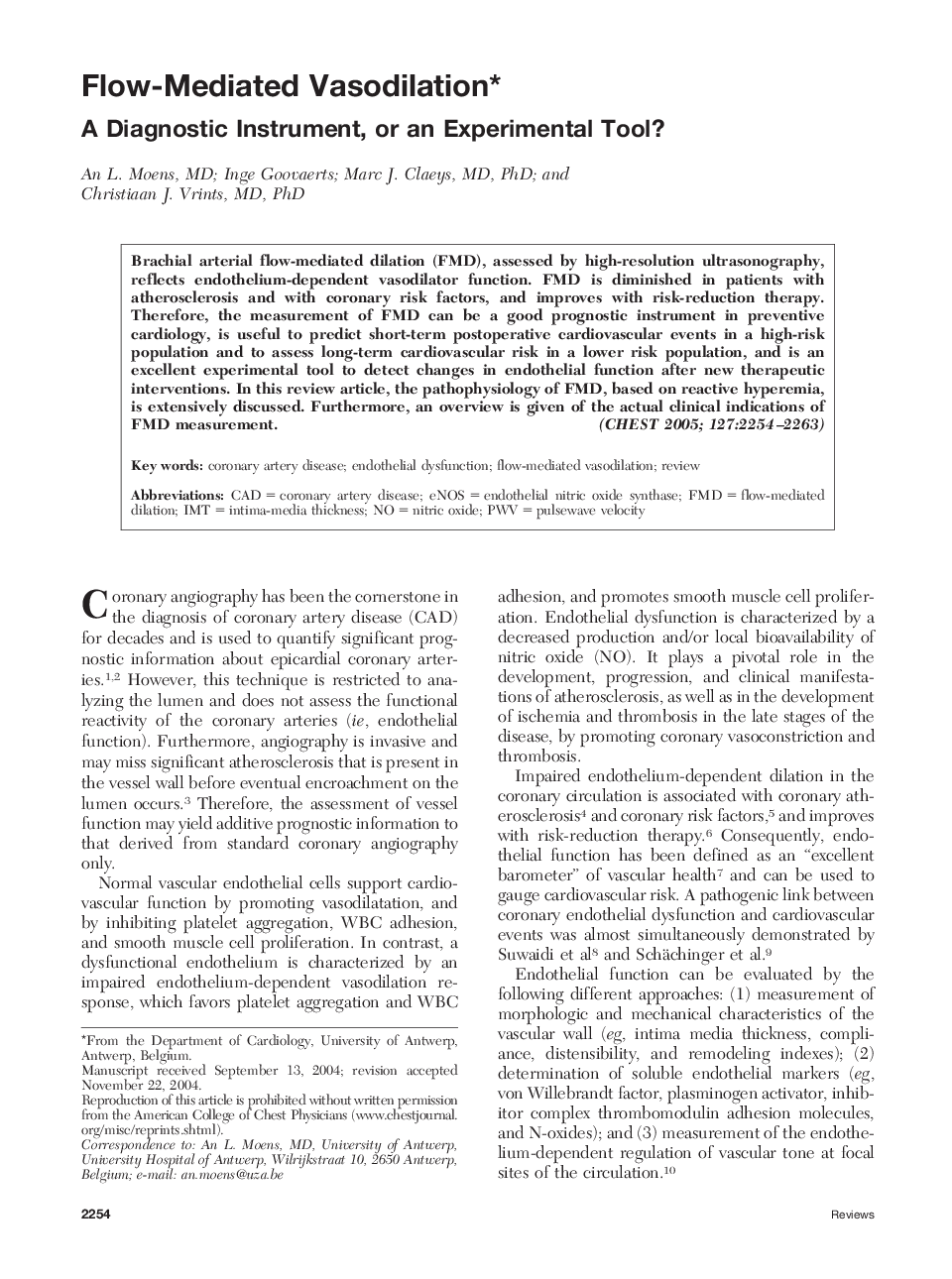| Article ID | Journal | Published Year | Pages | File Type |
|---|---|---|---|---|
| 2904816 | Chest | 2005 | 10 Pages |
Brachial arterial flow-mediated dilation (FMD), assessed by high-resolution ultrasonography, reflects endothelium-dependent vasodilator function. FMD is diminished in patients with atherosclerosis and with coronary risk factors, and improves with risk-reduction therapy. Therefore, the measurement of FMD can be a good prognostic instrument in preventive cardiology, is useful to predict short-term postoperative cardiovascular events in a high-risk population and to assess long-term cardiovascular risk in a lower risk population, and is an excellent experimental tool to detect changes in endothelial function after new therapeutic interventions. In this review article, the pathophysiology of FMD, based on reactive hyperemia, is extensively discussed. Furthermore, an overview is given of the actual clinical indications of FMD measurement.
